Chinese Dynasty: How Did the Prosperous Qing Empire Fall?
The Qing Dynasty (清朝, Qīng) was the last imperial dynasty of China, ruling from 1644 to 1912. Often highlighted as one of the most prosperous periods in Chinese history, its tragedy lies within its gradual downfall during the latter half of its reign. This period witnessed multifaceted, internal decay and external encroachments that crippled the empire. Struggling with domestic rebellions, corruption, overpopulation, economic crisis, and heightened pressure from Western imperialism, the Qing Dynasty staggered through the 19th century. The entire nation was caught in a whirlpool of catastrophic socio-political disturbances and full-fledged invasions from Western powers, igniting the flicker of rebellion and discontent that would eventually kindle the empire's downfall and usher in a new era of Chinese history.
The Beginning of Decline
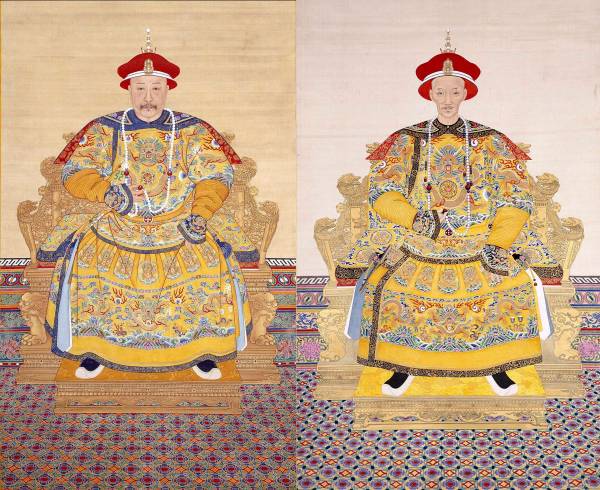
Portraits of Jiaqing (left) and Daoguang (right) Emperors
The Qing Dynasty began declining in the later years of Qianlong's (乾隆) reign. Qianlong's ambitious projects and favoritism towards Heshen (和珅) led to resource drain, political decay, and corruption. Land concentration and feudal exploitation intensified, driving farmers to rebellion. The White Lotus Rebellion (白莲教起义) erupted in January 1796, and lasted nine years until 1804, making it the largest peasant war in the mid-Qing Dynasty.
In 1796, the Qianlong Emperor abdicated in favor of his fifteenth son, the Jiaqing Emperor (嘉庆帝). Despite retiring, Qianlong continued to influence governance until his death in 1799. Jiaqing took full control and faced a crisis-ridden situation, implementing reforms to tackle corruption. He executed Heshen and his close associates, promoted honesty, and curbed extravagance. However, these reforms failed to reverse the dynasty's decline. Corruption worsened during his reign. In 1813, the Eight Trigrams Uprising (天理教起义) broke out, with some adherents breaking into the imperial palace with the help of eunuchs. The rebels were ultimately defeated due to the vast difference in strength.
In foreign relations, Jiaqing strongly opposed opium and vigilantly defended against British harassment along the coast. He rejected British proposals for diplomatic relations, opening ports, and ceding coastal islands in Zhejiang (浙江). His traditional isolationist stance led to a blanket exclusion of foreign influences.
Despite Jiaqing's efforts to stabilize and consolidate the Qing Dynasty against internal and external threats, irreversible historical trends had already signaled its decline by the end of his reign.
After ascending the throne in 1820, the Daoguang Emperor (道光帝) adopted a conservative governing style, diverging from the progressive approach of early Qing emperors. Initially, he attempted reforms to rejuvenate the nation, such as promoting sea transport and reforming salt administration. In 1827, the Qing Dynasty suppressed the Afaqi Khoja revolts (张格尔之乱), bringing peace to the region, and launched a campaign against opium. However, corruption persisted, factionalism was rife, and the military faced challenges with outdated equipment and lax discipline. Financially, the treasury was in deficit, while class contradictions intensified, rebellions erupted, and foreign aggression increased.
Internal Strife and External Threats
In the early 19th century, Western nations tried to negotiate trade with China, but the Qing government, considering itself superior, rejected these overtures. Britain, facing a trade deficit, began importing opium into China to improve its economy. The influx of opium from 1838 weakened the health of the Chinese people, caused economic inflation, and further weakened Qing strength.
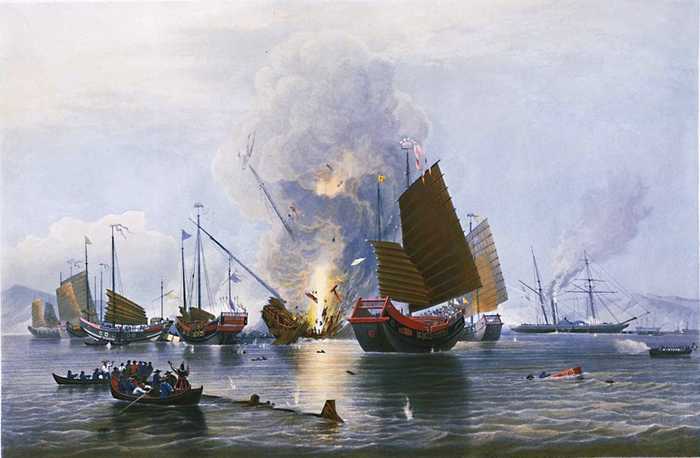
The British East India Company ship Nemesis (right background) destroying Chinese war junks during the Second Battle of Chuanbi on January 7, 1841, during the First Opium War.
To address this, the Daoguang Emperor sent Lin Zexu (林则徐) to the port of Guangzhou (广州) to declare a ban on opium, known as the Destruction of opium at Humen (虎门销烟). Consequently, in 1840, the First Opium War (第一次鸦片战争) broke out between China and Britain. After the Qing army's defeat, China signed the first unequal treaty with Britain, the Treaty of Nanking (《南京条约》), marking the beginning of China's century of humiliation, as well as the onset of modern Chinese history.
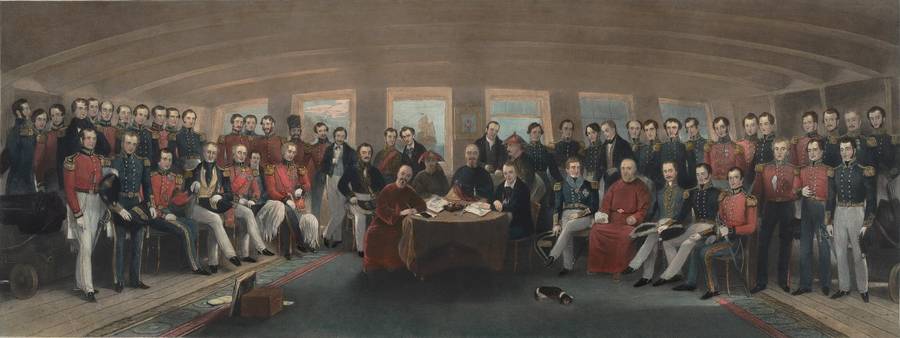
The signing and sealing of the Treaty of Nanking
In 1850, the Daoguang Emperor died, and his son took the throne as the Xianfeng Emperor (咸丰帝). At the time, pressure from Western nations led to the Qing government opening ports for trade, while local officials and landlords' land acquisitions disrupted rural economies. This sparked uprisings across China, including the Nian Rebellion (捻乱) in the north and the Taiping Heavenly Kingdom (太平天国) led by Hong Xiuquan (洪秀全) in central and southern China, along with the Panthay Rebellion (云南回变) in Yunnan. Hong Xiuquan reformed Christian doctrine and launched an uprising in Jintian (金田), Guangxi, in 1851, which led to the Tianjing Incident (天京事变) a few years later, after which the power of the Taiping Heavenly Kingdom declined.
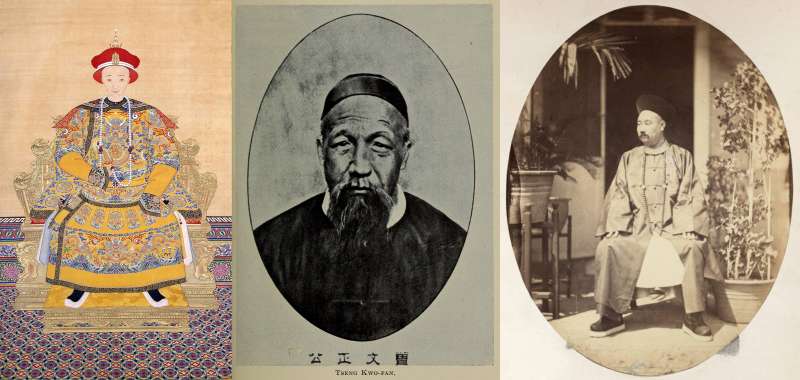
A portrait of the Xianfeng Emperor (left), photos of Zeng Guofan (middle) and Sushun (right)
To salvage the crisis-ridden situation, Xianfeng implemented reforms, appointing capable officials like Zeng Guofan (曾国藩), who suppressed rebellions, and Sushun (肃顺), who eradicated corruption and swiftly reformed governance. Sushun's crackdown on corruption significantly improved government integrity for decades. He also proposed reforms to address financial difficulties.
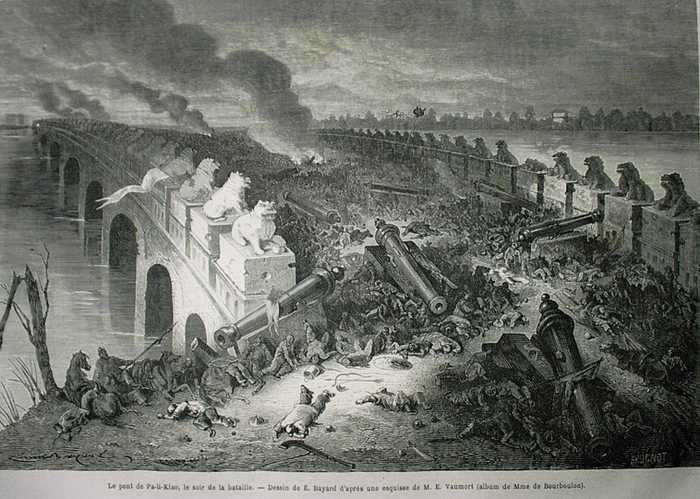
The Battle of Palikiao on September 21, 1860, during the Second Opium War. The Anglo-French victory opened a path to Beijing for Western armies.
However, these reform measures could not fundamentally reverse the decline. In 1856, the Second Opium War (第二次鸦片战争) began against Britain and France. By 1858, the British and French fleets had captured the Taku Forts (大沽炮台) and were advancing towards Tianjin. The Qing court signed the Treaty of Tianjin (《天津条约》) with Britain, the United States, France, and Russia.
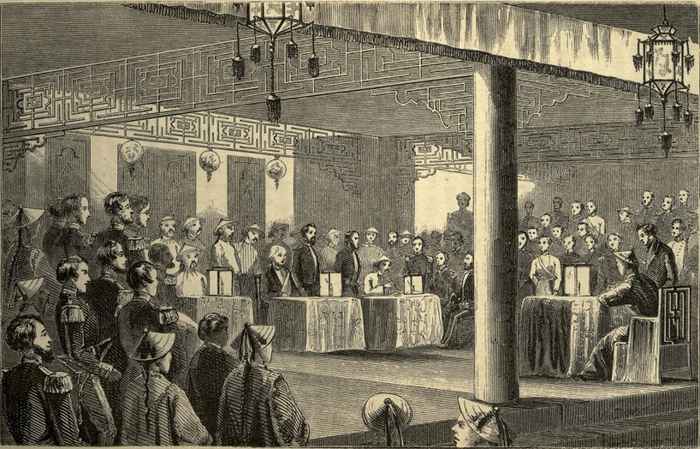
Signing the Treaty of Tianjin, 1858
However, the Western powers were not satisfied and reignited the war. Xianfeng ordered the Qing army to strengthen the defense of the Taku Forts. In 1859, during a provocation by Britain at the Taku Forts, the British and French invading forces were defeated. In 1860, Britain and France formed another alliance and invaded China, capturing Tianjin and advancing towards Beijing. Xianfeng sent envoys to negotiate, but the allied forces continued their attack, eventually sacking Beijing, including the Old Summer Palace (圆明园) and the Summer Palace (颐和园). Xianfeng fled and the Qing court signed the Convention of Peking (《北京条约》) with Britain, France, and Russia. Russia took advantage of the situation and seized over 1.5 million square kilometers of northern Chinese territory from the 1850s to the 1880s.
These series of unequal treaties led to China losing a significant amount of territory, sovereignty, and wealth, deepening its status as a semi-colonial and semi-feudal society.
Reforming and Rejuvenating
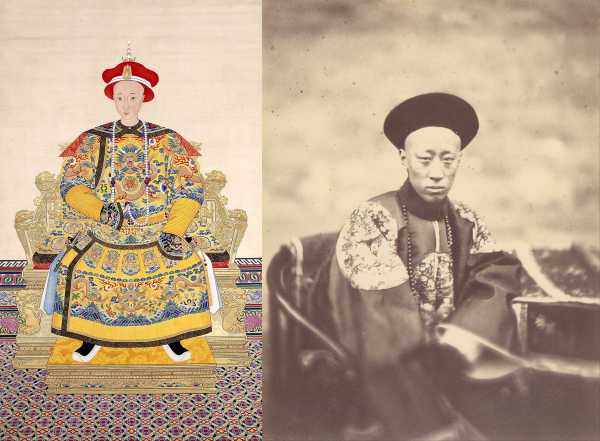
A portrait of the Tongzhi Emperor (left) and a photo of Prince Gong (right)
In 1861, the Xianfeng Emperor died, and his six-year-old son, the Tongzhi Emperor (同治帝), ascended the throne. Empress Dowagers Ci'an (慈安太后) and Cixi (慈禧太后) and Prince Gong (恭亲王) seized power in the Xinyou Coup (辛酉政变), with Empress Dowager Cixi eventually gaining control. Qing forces, led by Zeng Guofan and the Xiang Army (湘军), captured Taiping Heavenly Kingdom's Tianjing in 1864. The Eastern and Western Nian Armys (东、西捻军) were both defeated in 1868. Zuo Zongtang's (左宗棠) campaigns from 1862 to 1878 pacified rebellions and regained control of Ili (伊犁).
During this period, Prince Gong and officials including Zeng Guofan, Zuo Zongtang, Li Hongzhang (李鸿章), and Zhang Zhidong (张之洞) recognized Western military superiority, initiating reforms to adopt Western technology while preserving Chinese traditions known as the Self-Strengthening Movement (自强运动/洋务运动).
Starting in the early 1860s, the Self-Strengthening Movement began establishing military industries by introducing Western machinery and technology. These included the Anqing Arsenal (安庆内军械所) by Zeng Guofan, the Jiangnan Arsenal (江南制造总局) by Li Hongzhang in Shanghai, and the Fuzhou Shipyard (福州船政局) by Zuo Zongtang. These industries, despite being owned by the feudal government, employed hired labor, showing capitalist characteristics. In the 1870s, the movement expanded to civilian industries, which operated under official supervision and merchant operation. These industries relied on social investment, employed hired labor, aimed for profit, and had capitalist characteristics, but were managed by feudal bureaucrats, retaining feudal characteristics.
The Self-Strengthening Movement aimed to modernize the country by introducing foreign science and technology, establishing modern banking and postal systems, laying railways, and setting up telegraph networks. In the mid-1870s, efforts began to establish a navy, with the Beiyang (北洋), Nanyang (南洋), and Fujian (福建) navies taking shape by 1885. The focus later shifted to the Beiyang Navy, which was formally organized as the Beiyang Fleet (北洋水师) in 1888, comprising over 20 warships purchased from abroad. To support the fleet, naval ports were constructed, and new schools were established cultivating a group of translators, military, and technical personnel. Additionally, nearly 200 students were sent abroad to study military and scientific technology in Western countries.
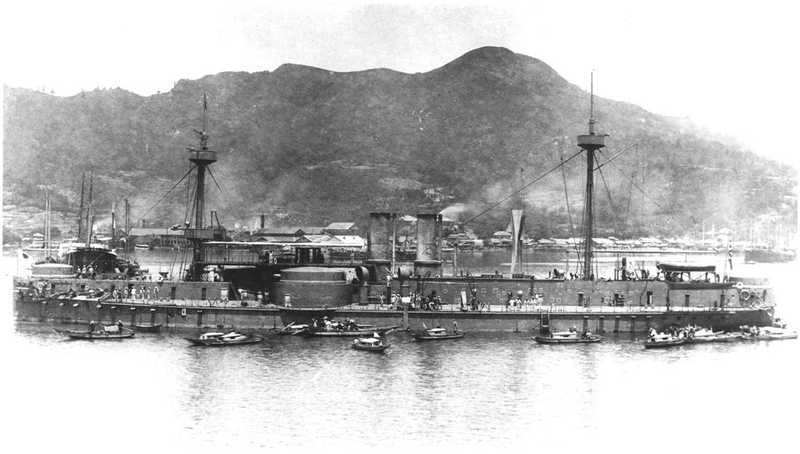
Zhenyuan Battleship of the Beiyang Fleet
The Self-Strengthening Movement partially restored and strengthened the Qing Dynasty's national power, leading to a period of relative stability known as the Tongzhi Restoration (同治中兴). With Western assistance, the Qing suppressed internal uprisings, regained control of Xinjiang, and improved its international status and image. By the 1880s, the Qing army's equipment had significantly improved.
Empire in Turmoil
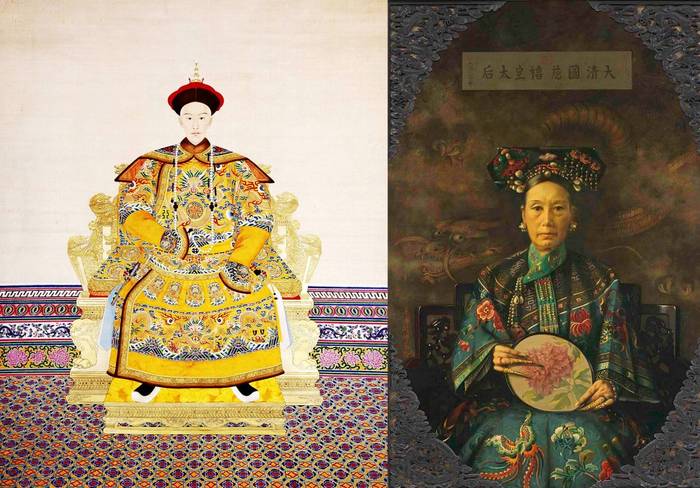
Portraits of the Guangxu Emperor (left) and Empress Dowager Cixi (right)
In 1874, the Tongzhi Emperor died at 19. His four-year-old cousin became the Guangxu Emperor (光绪帝). The two Empress Dowagers resumed control. In 1881, after Empress Dowager Ci'an's death, Cixi took sole power.
Since Tongzhi's reign, major capitalist countries have been transitioning to imperialism. They encroached on China's border regions, leading to crises. In 1853, the U.S. Navy intruded into Taiwan but was repelled by the indigenous people. In 1874, Japan invaded Taiwan. The Qing court defended Taiwan against Japan and signed a treaty for Japanese withdrawal. Britain explored Yunnan and Tibet. In 1876, under British pressure, the Qing court signed the Chefoo Convention in Yantai (烟台), Shandong. In 1890, the Qing court demarcated the China-Sikkim border. In 1893, the Qing court and Britain signed a treaty allowing British influence in Tibet.
In the northwest, the Khanate of Kokand (浩罕汗国) invaded Xinjiang in 1865. The Qing court debated coastal defense vs. frontier defense. Li Hongzhang favored coastal defense while suggesting abandoning Xinjiang. Zuo Zongtang advocated for Xinjiang's recovery. The Qing court agreed and appointed Zuo Zongtang to oversee Xinjiang affairs in 1875. The Qing troops recovered most of Xinjiang's northern territory by 1876. In 1878, they recaptured Hotan (和田), leaving only the Ili region under Russian control.
In 1883, the Qing and France went to war over Vietnam's sovereignty. From January to April 1884, France sent warships to the coasts of Fujian and Taiwan as a show of force. In 1885, General Feng Zicai (冯子材) led a successful campaign at Zhennan Pass (镇南关), forcing the French to retreat. Feng Zicai then pursued the retreating French forces, recapturing multiple places. But the Qing government decided to "seize victory and end the conflict", the Treaty of Tianjin (《中法新约》) was signed recognizing France's control over Vietnam and opening trade with France.
France's attempt to occupy Taiwan also failed, and Taiwan was declared a province of Qing. Liu Mingchuan (刘铭传) was appointed as Taiwan's first governor in 1885. He implemented various reforms, including building railways and developing industries. China also established a navy office. Also in 1885, Britain invaded Burma, and China was forced to sign a treaty recognizing Burma as British territory the following year.

Japanese troops firing at Qing craft at the Naval Battle of the Yellow Sea in the First Sino-Japanese War, 1894
At this time, Japan's power grew after the Meiji Restoration (明治维新). In 1872, Japan forced the Ryukyu Kingdom (琉球) to become part of Japan, leading to tensions with China. The First Sino-Japanese War (中日甲午战争) began on July 25, 1894, after Japan attacked Chinese ships. Lasting nine months, the war saw Japan capture Pyongyang, defeat the Beiyang Fleet, and take Port Arthur (旅顺) and Weihai (威海). The war ended with the fall of Weihaiwei (威海卫) on February 17, 1895, and the destruction of the Beiyang Fleet.
The Qing government signed the Treaty of Shimonoseki (《马关条约》) with Japan on April 17, 1895, ceding Taiwan, the Penghu Islands (澎湖列岛), and losing its vassal state, Korea. The Beiyang Fleet, established by Li Hongzhang, was destroyed, signaling the ultimate failure of the Self-Strengthening Movement.
Restoration for Survival
The signing of the Treaty of Shimonoseki led to further territorial concessions, indemnities, and loss of sovereignty. The defeat in the First Sino-Japanese War accelerated China's semi-colonization. The Guangxu Emperor, deeply affected by this situation, strongly supported the reformist movement to strengthen the country.
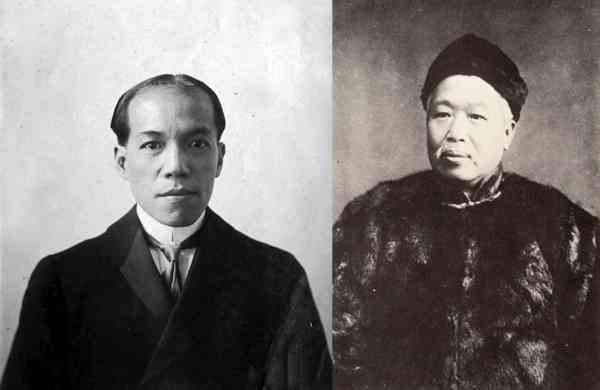
Liang Qichao (left) and Kang Youwei (right)
In 1898, Guangxu, along with reform leaders like Liang Qichao (梁启超) and Kang Youwei (康有为), initiated the Hundred Days' Reform (戊戌变法). This movement aimed at political change through policies such as freedom of speech and streamlining government institutions. Military reforms included adopting Western training and modernizing weaponry. Economic reforms aimed at promoting private enterprise and infrastructure development. However, the reform faced opposition from the conservative faction led by Empress Dowager Cixi. A coup attempt led to the reform's failure, with Guangxu being imprisoned and several reform leaders executed. The reform movement only lasted 103 days, hence the name "Hundred Days' Reform," which ended in complete failure.

Left: map showing the Boxer Rebellion and Eight-Nation Alliance, 1900-1901.
Right: navy troops of Eight-Nation Alliance during the Boxer Rebellion, painted by the Japanese in 1900.
In 1896, the Qing court signed the Sino-Russian Secret Treaty (《中俄密约》) to ally with Russia against Japan. Following China's defeat in the First Sino-Japanese War, foreign powers sought to partition China. Concurrently, the Boxer Rebellion (义和团运动) erupted in northern China with the slogan "Support the Qing government and exterminate the foreigners" ("扶清灭洋"). Empress Dowager Cixi covertly supported the Boxers, who declared war on eleven countries. Governors in the southeast resisted the imperial decree for war, sparking a self-defense movement. The Boxer Rebellion led to retaliation from Western powers.
In 1900, the Eight-Nation Alliance (八国联军) invaded Beijing. After the Qing court declared war, the Qing army suffered defeats, leading to Beijing's occupation. Empress Dowager Cixi fled with Guangxu. Blaming the Boxers, Cixi ordered their suppression. The Boxer Rebellion was defeated, and the Qing signed the Boxer Protocol (辛丑条约) in 1901.
In 1904, the Russo-Japanese War (日俄战争) broke out due to conflicting interests in Northeast China, further deepening China's semi-colonization.
Revolutionary Tide and the Fall of Qing
After the Eight-Nation Alliance's invasion, the Qing's power declined significantly. Intellectuals proposed two main reform paths: the Constitutionalists (立宪派) and the Revolutionaries (革命派). In 1901, Constitutionalists Kang Youwei and Liang Qichao pushed for a constitutional monarchy, with Liang publishing the "Constitutional Discussion" (《立宪法议》) to make the Guangxu Emperor a constitutional monarch. Meanwhile, Empress Dowager Cixi implemented the New Policies (清末新政), a series of cultural, economic, educational, military, diplomatic, and political reforms, including establishing the New Army (清朝新军) and abolishing the imperial examination, aiming to keep the dynasty in power.
However, the Revolutionaries, disappointed with Qing court reforms, sought to overthrow the dynasty and establish a republic. In 1894, Sun Yat-sen (孙中山) founded the Revive China Society (兴中会) in Honolulu, Hawaii; Huang Xing (黄兴) established the Huaxinghui (华兴会) in Changsha (长沙) in 1904; and Cai Yuanpei (蔡元培) founded the Restoration Society (光复会) in Shanghai the same year. Sun Yat-sen united these groups in 1905 to form the Tongmenghui (中国同盟会), advocating for principles including "to expel the Manchu rulers, to revive China, to establish a Republic, and to distribute land equally among the people" ("驱除鞑虏、恢复中华、创立民国、平均地权"). The Revolutionaries, along with anti-Qing groups like the Triads (三合会) and Hongmen (洪门), launched ten uprisings in southern China, expanding their influence into the New Army.
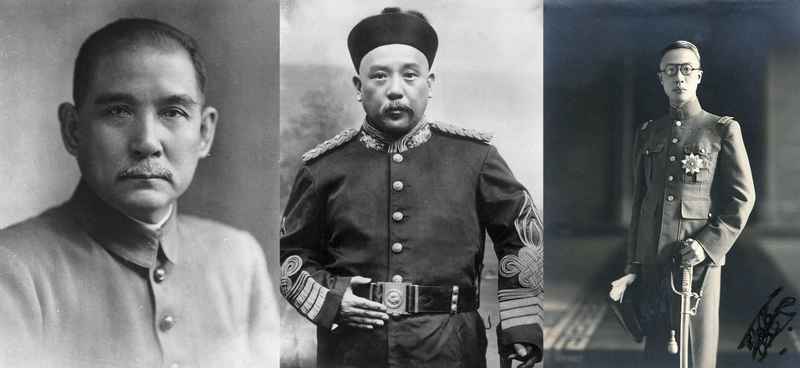
Sun Yat-sen (left), Yuan Shikai (middle), and Puyi (right)
The Constitutionalists and Revolutionaries disagreed on the reform approach. Initially, the Constitutionalists prevailed, and the Qing court promised constitutional implementation. In 1907, the government planned a Council of State and provincial advisory councils. By 1908, the Qing court had set a timetable for establishing advisory councils and outlined a constitutional monarchy with a parliament by 1913. However, in 1908, the Guangxu Emperor and Empress Dowager Cixi died, and three-year-old Puyi (溥仪) became the Xuantong Emperor (宣统帝) with his father as regent.
In May 1911, the Qing court formed the first constitutional monarchy cabinet led by Prince Qing (庆亲王). However, many cabinet members were of royal descent, leading to dissatisfaction and disappointment among the Constitutionalists, many of whom turned to cooperation with the Revolutionaries.

Posing in front of the Hubei Military Government in Wuhan after the Wuchang Uprising, part of the 1911 Revolution.
In the same month, the Railway Protection Movement (保路运动) erupted in Sichuan, prompting the Qing court to send the New Army to suppress it. In October, the Revolutionaries launched the Wuchang Uprising (武昌起义) in Hubei, followed by declarations of independence in southern provinces. Yuan Shikai (袁世凯), commander of the Beiyang New Army (北洋新军), was appointed Prime Minister and led Qing forces. During the Battle of Yangxia (阳夏之战), Yuan Shikai negotiated with revolutionaries, leading to talks between North and South.
The Republic of China (中华民国) was proclaimed on January 1, 1912, with Sun Yat-sen as provisional president. On February 12, Yuan Shikai forced the Xuantong Emperor to abdicate, marking the end of the Qing Dynasty, and thousands of years of Imperial China.
From the outbreak of the Wuchang Uprising to the overthrow of the Qing's rule and the establishment of the Republic of China, this historic period is known as the 1911 Revolution (or Xinhai Revolution, 辛亥革命).
Sun Yat-sen yielded power to Yuan Shikai not long after, unifying the country. Yuan became president in Beijing on March 6, 1912.
Despite the Qing's fall, many Qing officials remained loyal to the dynasty. Unwilling to accept the rule of the Republic of China, restoration attempts were carried out. Puyi was briefly restored as the Xuantong Emperor which only lasted for 12 days in 1917. He was later expelled from the Forbidden City in 1924.